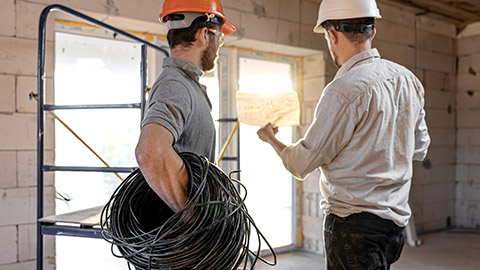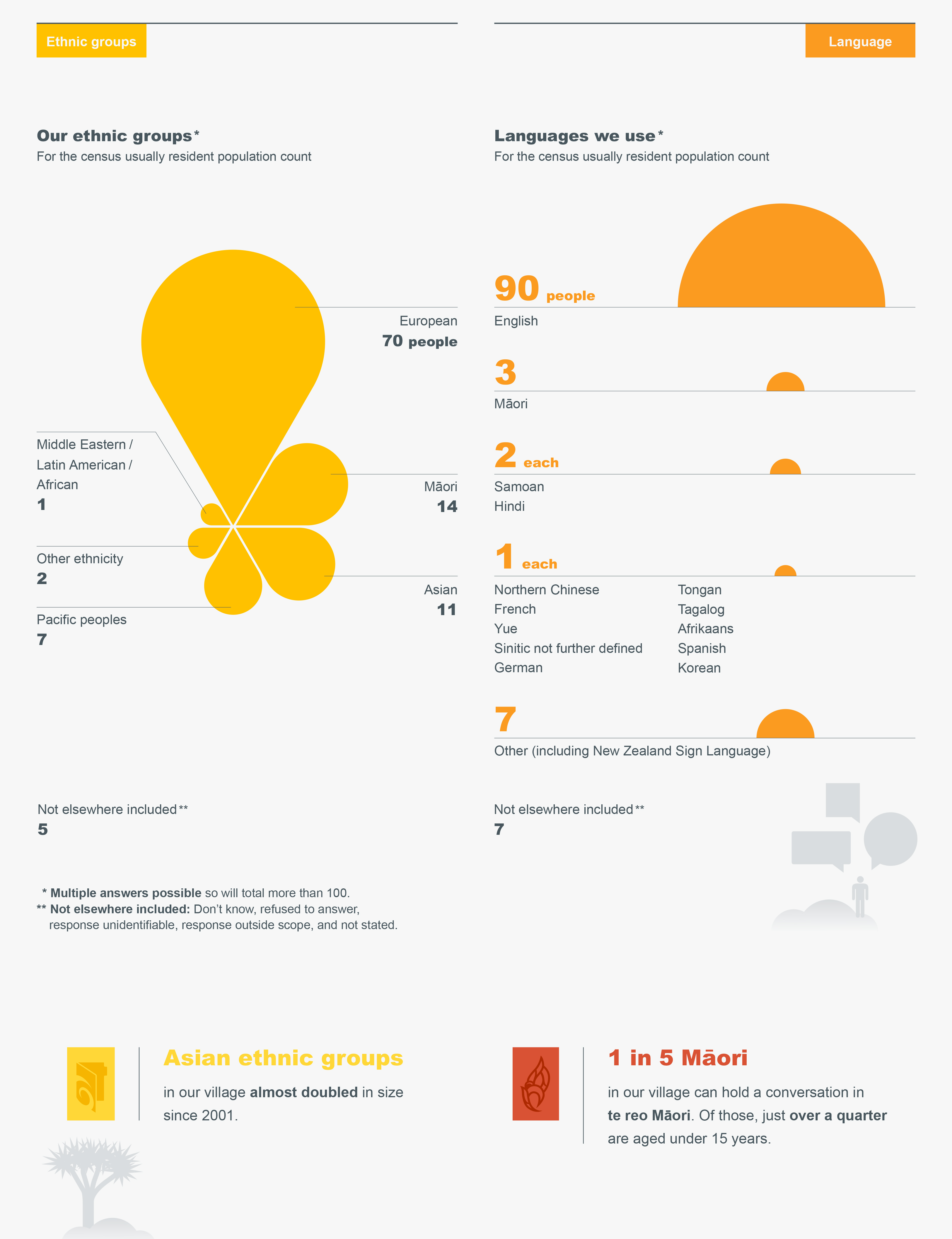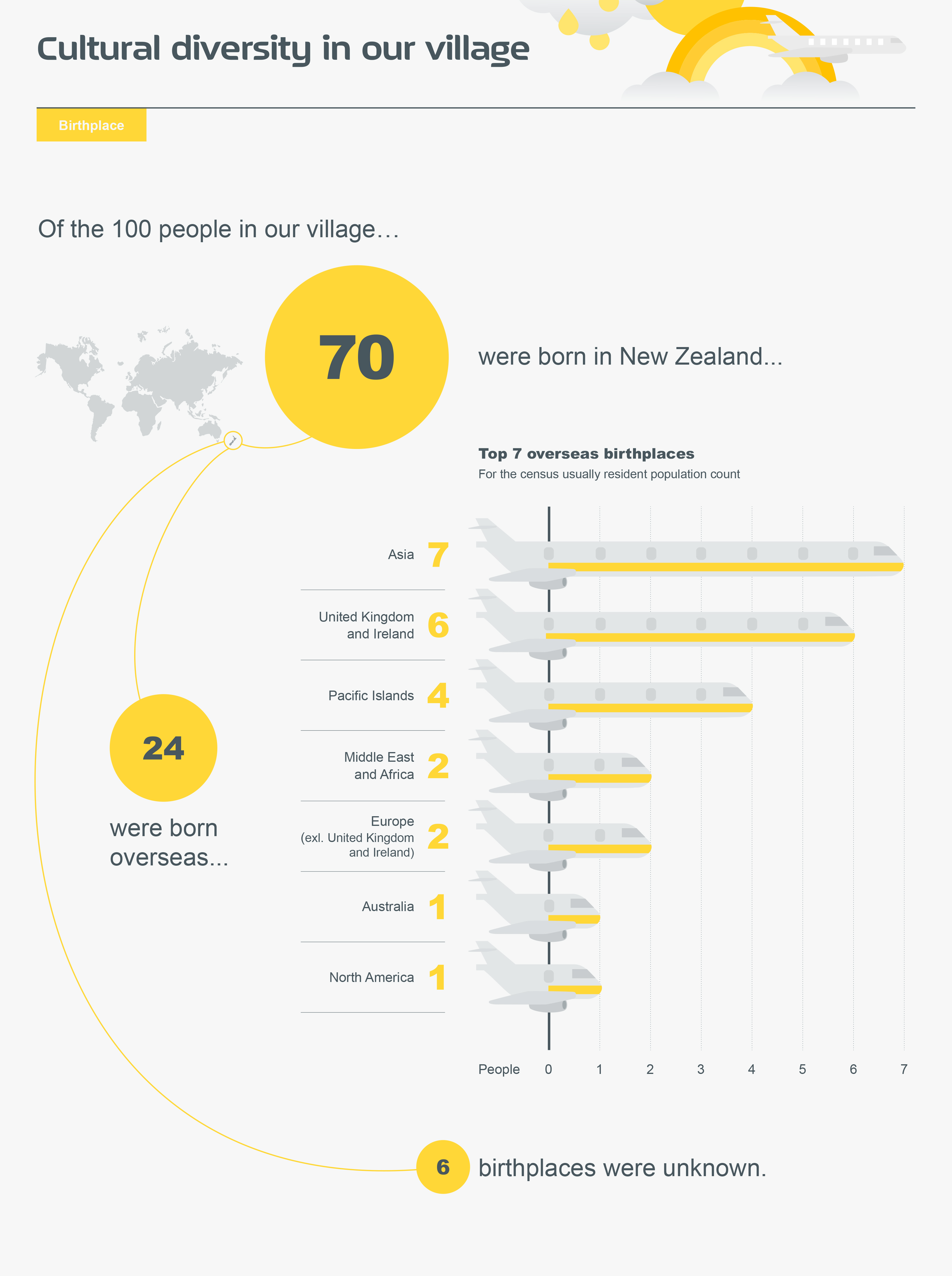Welcome to this module on Providing Effective Communication.
The learning outcome of this module is to identify and communicate team objectives, quality, and safety requirements for an on-site commercial or non-residential construction work programme.
In this topic of Communication Methods, Types, and Culture, we will aim to cover the following:
- Recognise the importance of communication in the workplace.
- Consider the different types and styles of communication.
- Understand the who, what, why, where, and how of choosing the form of communication in the workplace.
Module 4 Introduction from Will
Click 'Video Transcript' or the plus icon (+) to expand and reveal the transcript for the previous video.
Hello again, and welcome! Here, we’ll be going over three more subjects a little more thoroughly! First up is Construction Communication, where we need to learn not only a few bits of workplace lingo and jargon but also how we communicate. Next up will be a continuation with Communication Barriers, where we work out the pros and cons of different methods and understand how to interpret certain information. And lastly, we’re going to cover how to organise your instructions. Taking part in the discussions on a construction site is crucial; how we implement communication needs to be effective. We’re going to cover things from command protocol to feedback and resolving issues. So, get stuck in with communication. No matter if you’ve never been a big contributor to a conversation before or if you think you’ve got the gift of the gab, there’ll be something for everyone to learn and build up here. Good luck, and I’ll see you at assessment time.
What is Communication?
Communication is the transfer of facts, ideas, opinions, feelings, and information from one person or group to another.
It is how we know and understand everything around us.
We use communication to do the following:
- connect and learn about others
- share ideas, knowledge, thoughts, and feelings
- influence or persuade others
- and many other activities in our personal and professional life.
As a site supervisor, you would need to apply and practice good communication skills to be effective in leading your team.

As a supervisor, you want to ensure construction work is carried out smoothly. This is where good communication practices are essential among stakeholders involved in the construction project. One of the ways to develop effective communication is being able to determine what means of communication are available to you. Knowing your options will help you assess the suitability of the information you want to convey.
Communication Process
Communication follows a process that can be divided into stages for better understanding and improvement. It begins with encoding, where a message is created using language, and other forms of communication like spoken and non-verbal cues. This includes words, body language, and tone of voice.
The message is then transmitted through a medium and travels via a channel, such as in face-to-face conversations, phone calls, emails, or written letters. Once received, the message is decoded by the recipient, who tries to understand its content. Sometimes, messages have implied meanings that can lead to misinterpretation.
Feedback is a crucial part of communication, as it allows the recipient to respond to the sender, acknowledging receipt or expressing agreement or disagreement. This back-and-forth exchange continues in an ongoing process, ensuring effective information sharing between both parties.
Common means of on-site communication have been summarised in the following table:
| Means of On-site Communication | Description |
|---|---|
| Emails |
Emails tend to be more formal and suitable for sending files and detailed information. Online scheduling software usually has a built-in communication system connected to your company email address. |
| Face-to-face verbal communication |
This includes delivering instructions from one person to another and discussions during meetings and face-to-face negotiations. Among those working on-site, this is usually the fastest way to deliver information to people in the same place. |
| Video conference |
This includes discussions made over video calling software and smartphone applications. This essentially facilitates virtual meetings and discussions. |
| Two-way radio | Monitors project sites with large areas and multi-level building projects where updates must be delivered quickly. |
| Telephone contacts | These are especially useful when information must be conveyed immediately between people in different places. |
| Memoranda | Memoranda, commonly called ‘memos’, convey brief information and instructions to people involved in the construction project. |
Some of these communication methods are better suited to specific tasks than others.
Identifying Barriers to Communication Types
| Means of Communication | Advantages | Disadvantages and Barriers |
|---|---|---|
| Emails |
|
|
| Face-to-face Verbal Communication |
|
|
| Video Conference |
|
|
| Two-way Radio |
|
|
| Telephone Contacts |
|
|
Addressing Barriers to Communication Types
Let's look at the following ways to resolve the previously identified barriers:
- Make use of available devices and technology. You may use instant messaging applications such as WhatsApp or Teams for your team to speed up communication. You may also use different project management software to create files for logging team updates and project progress.
- Use more than one means of communication to reinforce important messages. This approach can allow for better information retention for urgent messages and important announcements. For example, send team members email and text messages to highlight important information.
- Use means that can easily be documented. Otherwise, implement systems that will supplement any verbal discussion with follow-up documentation. For example, a file documenting the meeting minutes would be created and sent to the participants afterwards.
- Keep the information short and clear. As mentioned before, always keep the messages straightforward. This is especially helpful for instructions delivered through verbal communication. Encourage short but substantial discussions and avoid distractions during meetings.
- Access existing templates for communication. There are interactions with your stakeholders that are quite similar. Leverage any previous communications documents and create templates to be reused for written communication. You may coordinate with the administration team for templates for issuing company procedures, clarification templates and other official documentation. This will help keep everything more organised, making it easier to sort documents this way.
Who do we communicate with?

In construction, teamwork involves various roles and tasks. Effective communication among team members is crucial for a smooth work schedule. Both the sender and receiver share responsibility for successful communication. Your communication style at work should align with the organisation’s core values.
Your everyday workplace communication is likely to be with members of your team and other co-workers on the job. The bigger the size of your company or project, the more people of different trades you will interact with.
The size of a construction company varies. Although there isn’t an official definition for all business size categories in New Zealand, there are three commonly recognised business size classifications.
- Small businesses: less than 20 employees.
- Medium businesses: more than 20 employees, but less than 100.
- Large businesses: more than 100 employees.
Companies that carry out small projects might benefit from having a close-knit team that interacts with you regularly; this includes addressing general concerns to the boss directly. In medium to large projects, you may never actually see or meet the boss or the “head honcho” of the company. When working on large projects with multiple personnel, it is important to adhere to the established hierarchy and chain of command. If you have specific concerns, direct them to the appropriate department or personnel.
So, how can we ensure that communication gets passed down through all team members, whether you’re in a small, medium or large company?
- Clear channels: Establish clear communication channels within the organisation for sharing information.
- Standardised documentation: Implement standardised documentation procedures for consistency.
- Training and orientation: Provide training and orientation to ensure all team members understand communication protocols.
- Open culture: Promote an open and inclusive communication culture where everyone feels comfortable sharing.
- Leverage technology: Use technology and tools to streamline communication and share real-time information.
In all types of construction, especially residential and commercial projects, there will be a representative of leaders categorised as the PCBU or Person Conducting a Business or Undertaking.
"The PCBU has the primary duty of care – the primary responsibility for people's health and safety at work."(Employment New Zealand)
Together with the project manager, the site supervisor may need to communicate with these stakeholders as part of your role responsibilities. These stakeholders could include:
- the client, project owner or organization commissioning the project.
- project manager or main builder of the building company you work for.
- subcontractor or additional "subbies" (electricians, plumbers, painters, etc.).
- vendors or material suppliers (general building suppliers such as Placemakers, Mitre 10, Bunnings or specialist suppliers such as doors, etc.).
- consultant and specialist consultant (architects, engineers, interior designers, surveyors, etc.)
- the Health and Safety Inspectors who monitor and enforce safety regulations on-site.
- government authority (local councils, etc.).
- local Community, the surrounding residents and businesses who may be affected by the project location.
Communication occurs in physical space, cultural and social values and psychological conditions. Communication happens with and without words.
So, how do people decode the message we’re trying to communicate?
- The words you’re trying to convey only account for less than 10%.
- The tone of voice, or how you say what you say, accounts for nearly 40%.
- Body language plays the most important role. This accounts for over half of the overall experience, 55% or more.
Using a careful combination of all the communication types will help you succeed as a site supervisor.
Here are the four main types of communication:
- Verbal communication (spoken)
- Non-verbal communication (body language)
- Written communication
- Visual communication.
Verbal and Non-verbal Communication
Verbal communication is probably the most used form of communication. It relies on sharing spoken words that the communicator and receiver understand.
Non-verbal communication is when you communicate with others without using words. Non-verbal communication is often sent unintentionally; you don’t deliberately send it as part of your message, but the other person still receives it.
However, sometimes, we deliberately use non-verbal communication to create or reinforce a particular meaning in our messages. For example, if you ask, ‘What are you doing?’ angrily, you probably express displeasure rather than curiosity.
Using your voice
You contribute to a more efficient and collaborative work environment by using your voice appropriately and considering the context. Remember, you must be heard and understood.
Here are some useful tips on how to use your voice effectively on a construction site:
- Volume. Some workers have naturally loud voices, while others may frequently talk in a murmur. Remember, you should adjust the volume of your voice to suit the size of the group, the clarity of your instruction, and the given environment or space provided.
- Pitch. Pitch is the range of notes your voice covers as you speak. Vary your pitch to avoid being monotonous and keep your workers tuned in. Generally, your best ‘instruction voice’ is slightly lower than your natural conversational pitch.
- Tone. Tone often relates to emotions. That’s why emotions are picked up quickly by listeners. If you speak irritably, your tone of voice will be quite different from when you are being patient. Remember to use a strong, confident tone without shouting.
- Pace. The pace, or speed, of your delivery is important. Slow down if you normally speak quickly because your workers may not be used to your pace. But don’t speak too slowly. Your audience may become bored and lose track of the connections between your words and what you’re getting across.
- Words. Avoid inappropriate language. Construction sites are diverse environments with people from various backgrounds. Avoid using inappropriate language, offensive jokes, and innuendos that might be offensive to others.
Body Language
Body language, such as gestures, facial expressions, and posture, can tell others much about what you mean that your words might not communicate. We are wired as humans to pick up body language instinctively.
Below are a few pointers to help communicate effectively:
- Be yourself and believe in yourself; what you think about yourself is projected through your body language.
- Being kind and respectful is not a sign of weakness; always start with a smile to help set the right tone.
- Make eye contact with your listeners, covering everyone in the group at intervals.
Directions of communication
Downward communication is easy to implement because decision-making usually flows from the top. Several types of downward communications exist, e.g., indoctrination, policy and procedure, job instruction, job rationale (how work fits into the total organisation), and feedback (letting workers know how well they are performing).
Horizontal communication is likely to be the most common communication direction team members use amongst themselves. Also known as lateral thinking, the five main purposes for using horizontal channels are:
- Task coordination
- Interpersonal conflict
- Resolution conflict
- Problem-solving
- Sharing of information
Upward communication refers to communication from subordinates to superiors. It is the only means management has of knowing about individuals’ performance, attitudes, feelings, and motivation at lower organisational levels. Efficient companies provide regular, systematic, upward communication, usually following the ‘chain of command’.
Styles of communication

As we can see in the above infographics, there are three communication styles that we could likely identify with most of the time. These are:
- Passive communication style
- Agressive communication style
- Assertive communication style
The first two (passive and aggressive) are polar opposites of each other, and the last one, assertive, is the preferred and recommended way of communication style. In these busy, loud, hectic environments, your choice of communication style can make all the difference.
Let us take the time to go through each communication style in further detail.
Passive Communication Style
Passive communication is a style of interaction where an individual tends to avoid expressing their opinions, needs, or desires.
Characteristics demonstrated by people using the passive communication style include:
- Avoid expressing their opinions or needs.
- Appearing reserved or hesitant in interactions.
- Struggling to assert themselves or set boundaries.
- Often, they prioritise others' needs over their own.
- Avoid disagreeing or standing up for themselves.
Aggressive Communication Style
Aggressive communication is a style characterised by a forceful and sometimes hostile manner of interaction. Individuals displaying aggressive communication might:
- Act in a dominating or intimidating way.
- Use a tone or body language that seems confrontational.
- Disregard the opinions or needs of others.
- Often interrupt or talk over others.
- Directly express anger or use belittling language.
This communication style can create tension or conflict, making others feel overwhelmed, belittled, or threatened.
Assertive Communication Style
People who demonstrate an assertive communication style directly express their feelings and opinions in a way that is considerate of those they are communicating with. They promote their own needs while still respecting the rights of others.
Characteristics demonstrated by people using the assertive communication style include:
- Expressing disagreement respectfully.
- Stating their true needs and wants clearly and respectfully.
- Speaking with confidence but not aggressive.
- Clearly articulating their thoughts and needs.
- Being respectful in their tone and body language.
- Acknowledging the perspectives of others.
- Setting clear boundaries and expressing themselves without belittling others.
This communication style promotes open and respectful dialogue, allowing individuals to express themselves confidently while considering the feelings and needs of others.
Writing in the Construction Industry
Written communication is essential in construction and comes in various forms like reports, memos, emails, etc. Knowing your audience is crucial to effective written communication. Given people’s limited time for reading, it’s vital to make messages informative, attention-grabbing, and straightforward. Written communication is formal and often used for recording data, project histories, and other official purposes, following the organisation’s preferred format.
This type of communication plays a pivotal role in construction, ensuring effective project management, safety, and compliance. It helps align all involved parties and promotes smooth plan execution. For instance, changes in project details should be documented in writing as they may impact costs and schedules.
The primary goal of written communication is to clarify your objective, whether it’s maintaining a daily diary or recording information. Staying focused on the purpose of your writing saves time and resources. Clear written communication ensures readers easily understand on-site activities, facilitating effective project management and documentation.
Paper trail

Maintaining a paper trail in construction is crucial for several reasons, primarily to ensure:
- transparency
- accountability
- legal compliance
- progress payments are paid
- and effective staff management.
A paper trail records all communications, decisions, actions, and transactions related to a construction project.
Below are just a few reasons why having a documented trail is important:
- Project transparency and accountability
- Legal protection and dispute resolution
- Program or workflow documentation
- Regulatory standard compliance
- Risk management and addressing any potential risks
- Communication between parties
- Project reflection (evaluate program stage success).
A well-stored, documented, and maintained paper trail of evidence in construction is essential for maintaining clear communication, accountability, legal compliance, and effective project management.

New Zealand is a multicultural society, so it’s important to be sensitive to cultural differences and adapt your communication style accordingly.
Unpacking the New Zealand culture when you are already so familiar with it can be strange. You are already living and practising the norms in your daily activities, so why bother unpicking them?
New Zealand is known for its friendly and open communication culture. However, please note that cultural norms and practices can evolve and vary from different sites, so it’s a good idea to be open to different norms.
That being said, below are a few examples of communication practices in and around New Zealand workplaces.
- Politeness: While directness is appreciated, politeness and respect are still essential aspects of communication
- Collaborative approach: Kiwis tend to emphasise collaboration and teamwork.
- Sense of humour: Humour, especially a self-deprecating and light-hearted style.
- Informality: Generally, informal communication styles are preferred, even in professional settings.
Whether you identify as a ‘Kiwi’ or a migrant, observing the cues and adapting your communication style can help you establish positive connections.
Watch and Reflect
Watch the following video by New Zealand icon Jordan Watson, aka ‘How to Dad’ on New Zealand slang. When you are done watching, complete the Documentation Tool activity following the video. Watch out for the use of one offensive word. Let’s keep our construction site a positive place to be.
The following Documentation tool, ‘Kiwi slang at your workplace’, has three question sets. Navigate through the questions by clicking the ‘Question’ tab on the left or the arrow buttons on the corner of the box. You can type your answers into the boxes. When you have answered all questions, click the last tab to export and save a copy of the file.
Formal and Informal Communication
Usually, in any form of workplace, we use formal communication with our suppliers and supervisors and informal communication with our workmates.
If you are in a situation where you can’t decide what form to use, you should watch and listen to others first to get a clue about your approach. A good guideline would always be to communicate with others respectfully and kindly, regardless of their status or position.
We might not realise it, but how we speak to different team members is influenced by how well we know them and the situation in which we are in. We don’t tend to alter our vocabulary and tone of voice slightly to speak to a client or boss as when chatting with our workmates and fishing buddies.
We are likely to speak quite ‘formally’ to the ones in some form of authority like council inspectors or police officers, but we can be far more relaxed and spontaneous with family and friends.
Formal and informal communication can also relate to the way we write. A text message to a workmate would probably be quite casual, but a council application should be written more formally in its approach.
Speak the Lingo

Everyone has a set of vocabulary they like to use and repeat regularly, and working in the construction industry requires you to ‘speak the lingo’ or know the basic technical terms.
Trade terms are your shorthand. They enable everyone to get on with the job efficiently without explaining things every time. As a supervisor, it’s your job to ensure everyone understands what they are required to do and can follow instructions and communicate effectively with other workers.
In construction, it’s essential to ensure that all team members understand technical terms. For instance, if you’re discussing a variation in fixing structural posts to boundary joists with Jimmy, make sure he knows what those terms mean. It’s important to strike a balance between using trade terminology and plain language. Sometimes, you must use formal technical language, especially for safety-related matters. However, it’s advisable to include explanations in plain language, even when using technical terms, to support and reassure the team.
The language you use will depend on who you are talking to. If you know the team well and are sure of their knowledge of the topic, you can use language you know they’ll understand. If you don’t know everyone’s level of knowledge, or if the topic is entirely new, play it safe and translate technical terms into plain language.
As the sender of the information, you should monitor the effect of the message and language used. Tricks you can use in conversation to help recognise understanding is to:
- Watch your listeners’ faces to see if they are engaged, frowning, or looking puzzled.
- Ask if they are following you. A simple “Got it?” allows them to confirm their understanding or ask questions.
- Ask someone to explain to the group what they got from a piece of information.
- If they repeat your words, see if they can explain it differently.
In summary, try and use appropriate language suitable for the particular individual or group and use language that the listener easily understands.
Languages spoken in New Zealand
The following infographic from StatsNZ looks at New Zealand as a simplified village of 100 people.
Out of 100 people,
- 70 people are European
- 14 people are Māori
- 11 people are Asian
- 7 people are Pasifika
- and one person is Middle Eastern/Latin American/African

While English is the predominant language spoken in New Zealand, Māori and New Zealand Sign Language are afforded special protection and recognition as the two official languages in Aotearoa, New Zealand. These were established by the Māori Language Act 1987 and the New Zealand Sign Language Act 2006.
The Māori language is considered a national taonga (treasure) and is undergoing a revival. Initiatives such as:
- te Wiki o te Reo Māori (Māori Language Week)
- kura kaupapa Māori (state schools where the teaching is in Te Reo Māori)
- broadcasting in te reo Māori on Whakaata Māori, Māori Television and Te Reo channel
all play a role in ensuring Te Reo remains a living language embraced throughout New Zealand.
Te Aka (Māori Dictionary) is a great resource and includes recordings of words so you can check pronunciation.
New Zealand is a multicultural country with the latest net migration gain of more than 65,000 people in the March 2023 year.
The following infographic shows New Zealand as a village of 100 people with:
- 70 people born in New Zealand and
- 30 people born overseas and migrated from all over the world.

The country and region of origin of the migrants are reflected in the diversity of languages spoken in Aotearoa, New Zealand. Most of the migrants are bilingual or multi-lingual and are fluent in English.
Top 25 Languages in New Zealand
| LANGUAGE
|
NUMBER OF SPEAKERS | PERCENTAGE OF TOTAL POPULATION, % |
|---|---|---|
| English | 3,819,969 | 90% |
| Māori | 148,395 | 3.2% |
| Samoan | 86,403 | 2% |
| Hindi | 66,309 | 1% |
| Northern Chinese | 52,263 | 1% |
| French | 49,125 | 1% |
| Yue | 44,625 | 1% |
| Sinitic | 42,753 | 1% |
| German | 36,642 | 1% |
| Tongan | 31,839 | 1% |
| Tagalog | 29,016 | 1% |
| Afrikaans | 27,387 | 1% |
| Spanish | 26,979 | 1% |
| Korean | 26,373 | 1% |
| Dutch | 24,006 | 1% |
| New Zealand Sign Language | 20,235 | <1% |
| Japanese | 20,148 | <1% |
| Punjabi | 19,752 | <1% |
| Gujarati | 17,502 | <1% |
| Arabic | 10,746 | <1% |
When communicating with team members whose English is not their first language:
- Be aware of your own biases. Understand that you might have preconceived ideas that affect how you talk to others, so try to recognise and challenge those ideas to have fair and equal conversations.
- Listen carefully. Please pay attention to what the person is saying, let them speak without interrupting, and try to understand their point of view to show respect and understanding.
- Use clear and simple words. Talk in a way that is easy to understand, avoid complicated terms, speak slowly and clearly, and be careful not to sound like you’re talking down to someone.
- Be patient and flexible. Remember that the language barrier can take longer to communicate, so be patient and give people extra time to express themselves.
- Avoid assuming things about others. Treat each person individually and don’t make assumptions based on their language or culture; instead, be open-minded and treat everyone fairly.
- Respect cultural differences. Understand that people from different cultures may communicate differently, so be sensitive and adapt to their communication style to create a friendly and inclusive environment.
- Ask for clarification and give feedback.
- Don’t be overly focused on small language mistakes. It’s not helpful to constantly correct small errors in grammar, pronunciation, etc.; instead, focus on understanding what the person is trying to say and having a good conversation.
Further Reading
More information on the “Communication culture of New Zealand” can be read in this article from culturalatlas.
